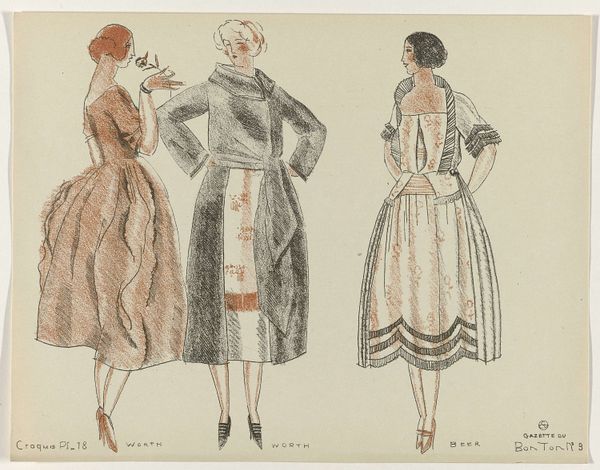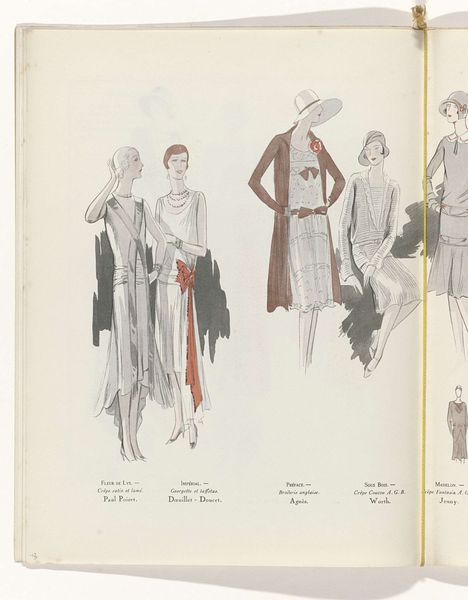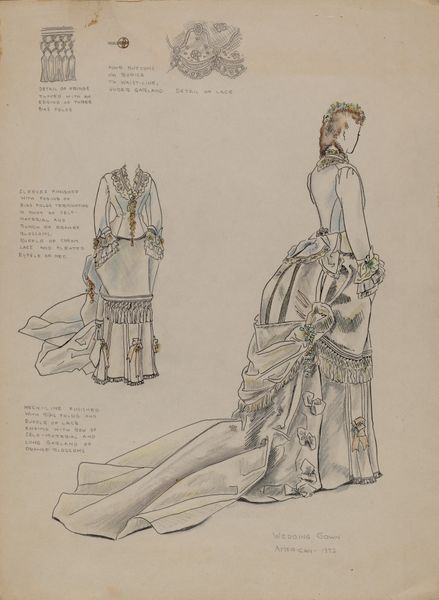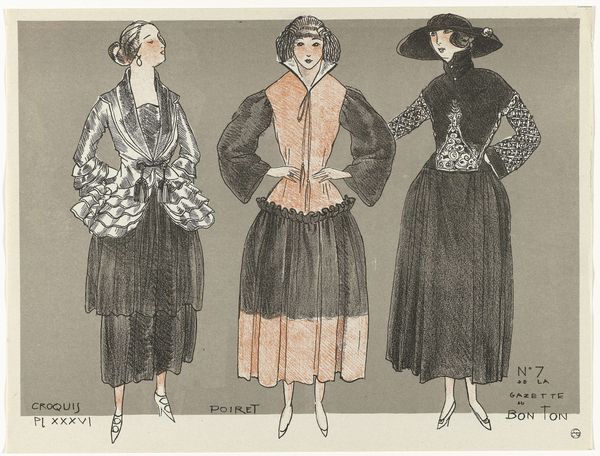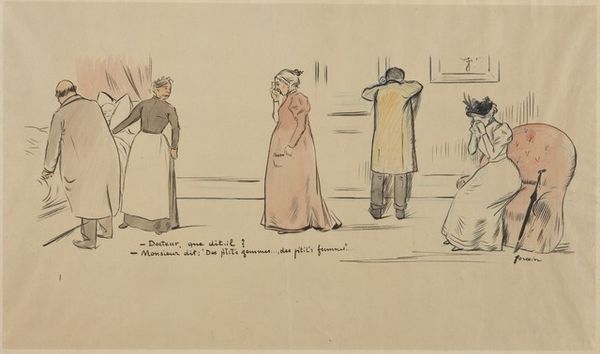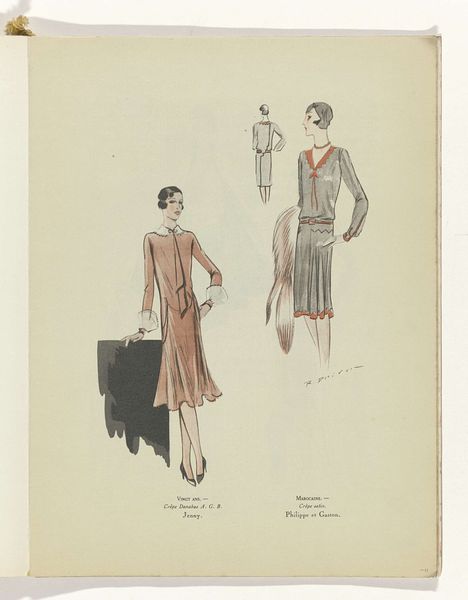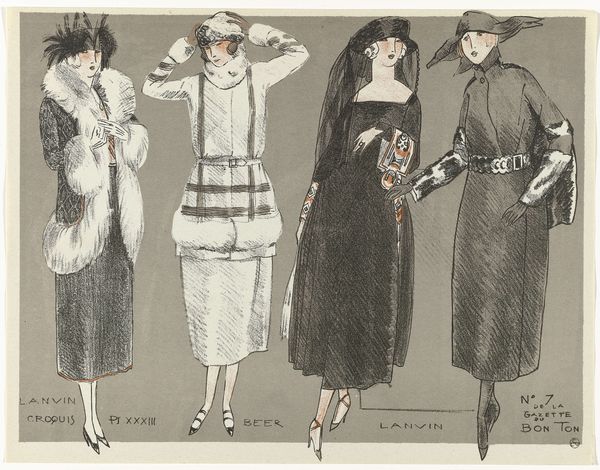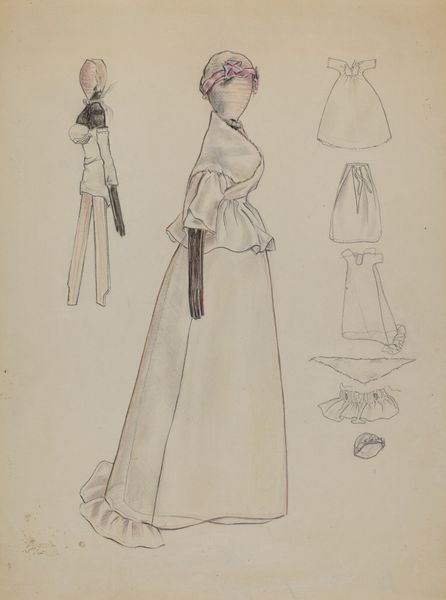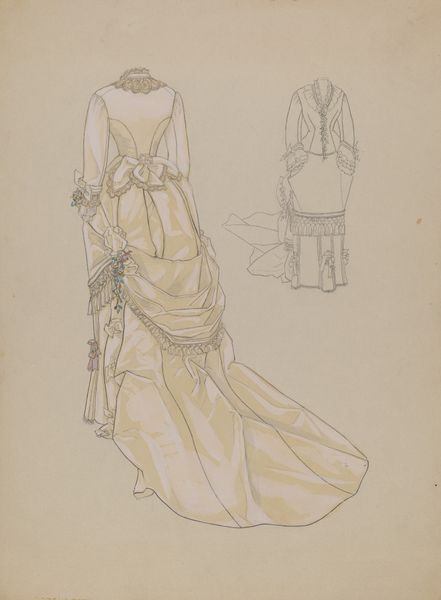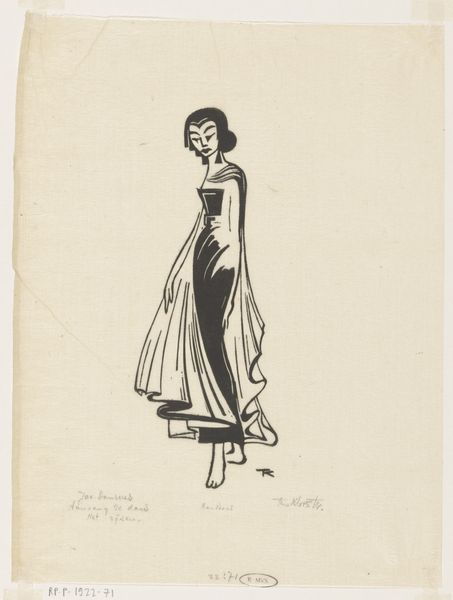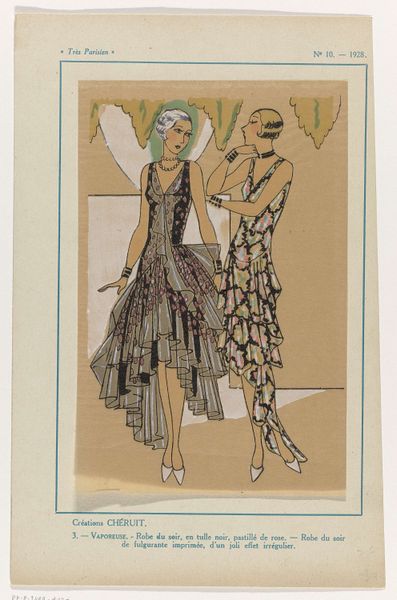
drawing
#
fashion design
#
drawing
#
underwear fashion design
#
fashion mockup
#
fashion and textile design
#
figuration
#
historical fashion
#
traditional dress
#
fashion illustration
#
fashion sketch
#
dress
#
clothing design
#
bridal fashion
Dimensions: height 191 mm, width 247 mm
Copyright: Rijks Museum: Open Domain
Curator: Here we have a fashion plate titled "Gazette du Bon Ton, 1920 - No. 3, Croquis Pl. 19: Doeuillet / Worth," a drawing from 1920 attributed to Mario Simon. Editor: My first thought is simplicity. The linework is so spare, yet it manages to convey these intricate dress designs. Curator: Absolutely, it captures the post-war mood, doesn’t it? After the heavy ornamentation of the Edwardian era, there’s this turn towards practicality, yet still holding onto elegance. Think about how the war redefined gender roles – women entering the workforce. These fashions reflect that shift. Editor: Right, the materials must have been key too. Those lighter fabrics, allowing for more movement – away from those constricting corsets and layers. I’m curious about the production context of these garments – were they aimed at the haute bourgeoisie, a new wealthy class? Curator: Undoubtedly. “Gazette du Bon Ton” itself was targeted at a very exclusive readership. The designs showcased here are collaborations, representing both established houses like Worth and slightly newer ones like Doeuillet. It's also important to remember how visual culture impacted sartorial practices—fashion illustration became a powerful tool for dictating trends and class aspirations. Editor: These lines hint at techniques like embroidery or perhaps even the early uses of beading that were being industrialized at this time. I imagine women leafing through this very magazine, carefully studying the construction, perhaps commissioning local seamstresses. The dissemination and then the eventual replication... Curator: Precisely, and that touches upon agency. While the elite designers dictated the silhouette, individual women had the agency to interpret those lines through the fabrics they chose and the seamstresses they patronized. It brings forth the crucial link between clothing, identity, and power in a rapidly changing society. Editor: So true. It prompts questions about how the burgeoning textile industries were able to meet the aesthetic demands presented in publications such as the “Gazette.” Curator: Well, looking at this today reminds us how fashion constantly recycles and reinterprets. The simplicity, the silhouette – you can still see echoes of these 1920s designs on modern runways. Editor: Agreed, and analyzing images such as this really allows us to reflect on what we value materially and aesthetically. Curator: And historically! Thanks for exploring with me. Editor: Likewise, a fruitful discussion!
Comments
No comments
Be the first to comment and join the conversation on the ultimate creative platform.

